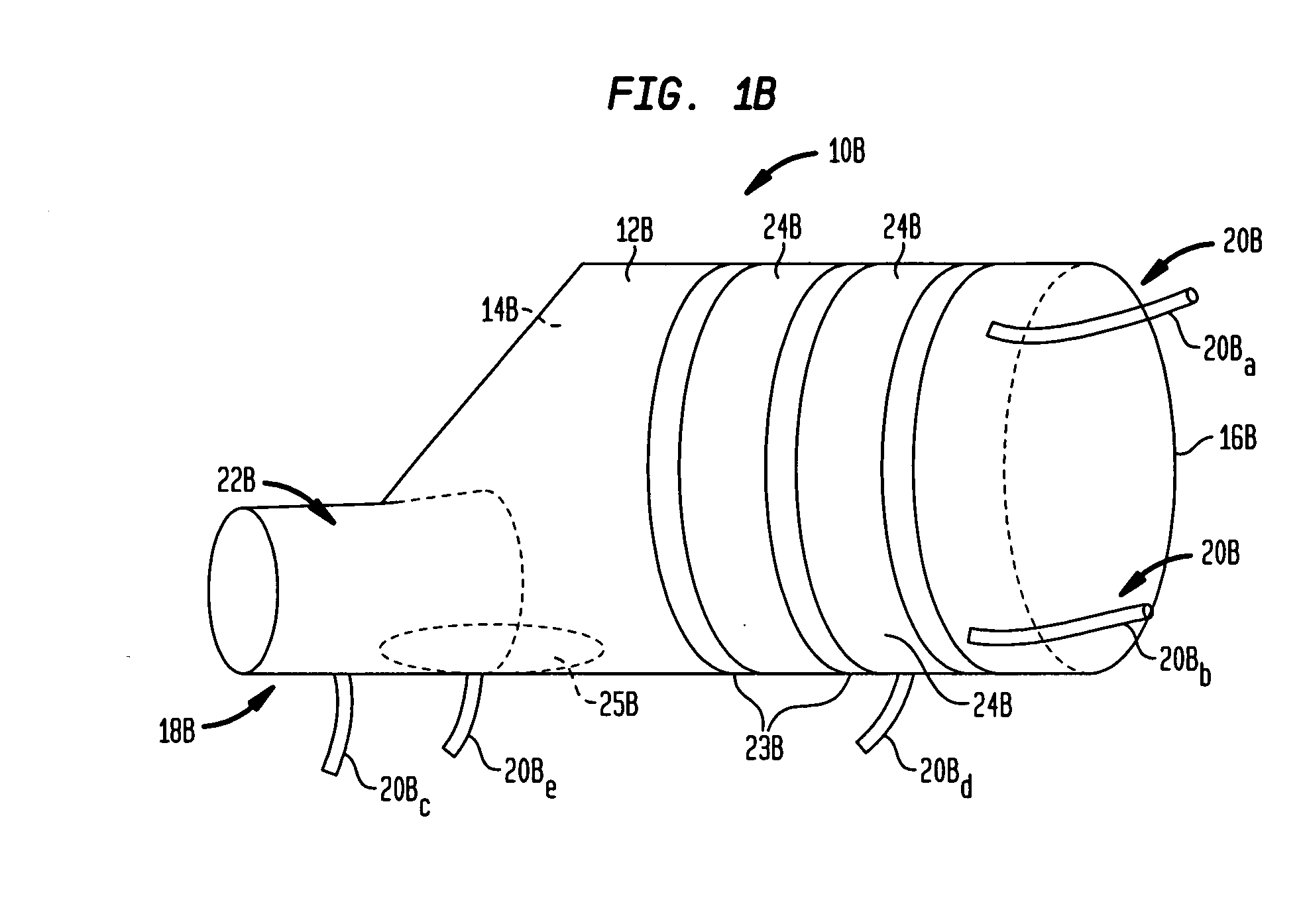Access port for flexible wound treatment devices
a flexible wound and access port technology, applied in the field of access ports for flexible wound treatment devices, can solve the problems of time and effort expended in cleaning and sterilizing the devices, and the possibility of transferring infection from one patient to another
- Summary
- Abstract
- Description
- Claims
- Application Information
AI Technical Summary
Problems solved by technology
Method used
Image
Examples
embodiment a
[0053]In an embodiment of the present invention, a flexible wound treatment device includes an access port. The access port allows a clinician to easily access the limb being treated and adjust the limb. Further, the clinician can apply medication or change dressings in a manner similar to that attained with the prior art rigid chamber access ports.
[0054]FIG. 1A illustrates a flexible wound treatment device having an access port and a corresponding clamping mechanism. In particular, a flexible wound treatment device 10A includes a first end 12A that receives a limb and a second end 14A that includes an access port. The first end 12A can be sealed about the patient's limb by any suitable means. One such sealing means is in the nature of an inflatable cuff to be described hereinafter.
[0055]The device 10A generally includes two sheets of materials 16A, 18A that are permanently sealed at ends parallel to the longitudinal axis to form an interior 20A of the device 10A. The sheets 16A, 18...
embodiment b
[0072]Referring to FIG. 1B, in an embodiment of the present invention, a wound treatment device 10B is illustrated. The device may be constructed in a manner that improves the treatment of a wound while reducing or eliminating concerns associated with forming the device.
[0073]The device can present a challenge associated with the materials and methods used to form the device. For instance, the device can be formed using radio frequency (“RF”) welding. However, there can be concerns with using this method. Accordingly, materials and methods of forming the device that reduce or eliminate these concerns is desired, while simultaneously improving the efficacy of the device.
[0074]As best seen in FIG. 1B, device 10B includes a device housing 12B that forms an interior region or chamber 14B, which is closed at a first end 16B and open at a second end 18B to receive a limb of a patient.
[0075]As best seen in FIG. 2B, housing 12B is formed from two flexible sheets, an outer sheet 12Ba, and an...
embodiment c
[0105]In an embodiment of the present invention, a triple modality wound treatment device is configured to provide one or more therapies, including compression therapy, evacuation therapy, and / or hyperbaric gas treatment therapy to treat a wound. The combination of all three modalities is believed to provide additional benefits not previously seen with any one therapy. When intermittent compression is combined with negative pressure, interstitial fluid is removed, allowing for reduced swelling. Reduced swelling in turn, increases blood flow to the area, which, when combined with oxygen, provides improved granulation in the tissue to provide enhanced treatment over prior art wound treatment methods.
[0106]In one embodiment of the present invention, the device includes at least two individual compartments. Each compartment can be a wound treatment separated by an inflatable divider cuff that seals against the patient's limb. The individual cuffs can each contain a separate valve so tha...
PUM
 Login to View More
Login to View More Abstract
Description
Claims
Application Information
 Login to View More
Login to View More - R&D
- Intellectual Property
- Life Sciences
- Materials
- Tech Scout
- Unparalleled Data Quality
- Higher Quality Content
- 60% Fewer Hallucinations
Browse by: Latest US Patents, China's latest patents, Technical Efficacy Thesaurus, Application Domain, Technology Topic, Popular Technical Reports.
© 2025 PatSnap. All rights reserved.Legal|Privacy policy|Modern Slavery Act Transparency Statement|Sitemap|About US| Contact US: help@patsnap.com



